Few communities in the world are as closely associated with the words ‘refugee’ and ‘human rights’ as the Tibetans. Their struggle over the last 60 years has seen them become the ultimate example of what it means to be a highly visible, well-publicised refugee community. Thanks to the power of celebrity supporters like Richard Gere and Adam Yauch of the Beastie Boys, those who are not familiar with Buddhism, or who have no idea where Tibet is, will still have some inkling about the so-called Tibetan plight.
But while the outside world has one view of the Tibetans, those who know the real story see a very different picture. Because while the average Tibetan may be struggling for their everyday needs, in reality their leadership is not. And while there were many positives to Tibetan society, for example the activities of the great monasteries, there are also many terrible and uncomfortable truths.
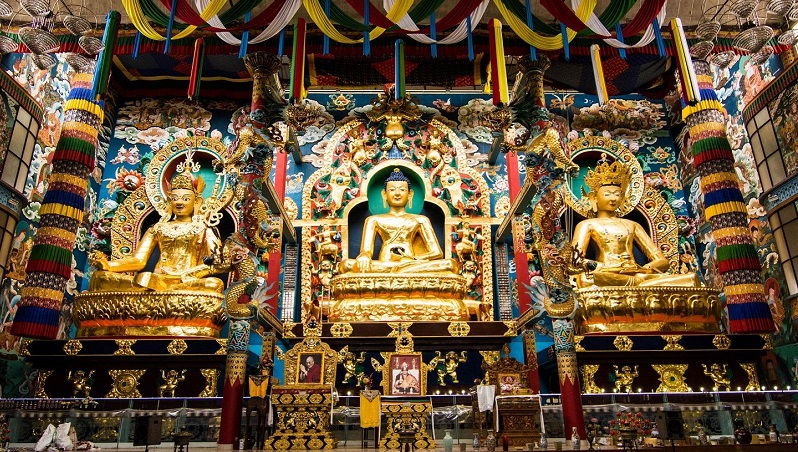
The Tibetan leadership travels around the world begging various foreign governments for funds, while they parade His Holiness the Dalai Lama to various sponsored events to charm people into donating to the Tibetan leadership. But where do all of these funds go and what are they used for? The Tibetan settlements are full of ornate temples and richly-decorated altars, while the Tibetan people beg the world for donations when their livelihoods are destroyed, as in the case of the fire at the Lal Qilla Tibetan sweater market.
One such ugly truth is that pre-1959 Tibet was a class-driven society. Outside of the monasteries, people were divided into nobles and peasants, and the nobles wielded far greater power than the average Tibetan could ever dream of. Theirs was a life of wealth and leisure, reinforced by a manipulated interpretation of the Buddha’s teachings on karma. That is, if you were born a peasant, it was your karma and thus your lot in life and how others treat you should be accepted. This class system has carried over into post-1959 Tibetan society, and today it is played out in India in the foothills of the Himalayas.
High up in Dharamsala, the Tibetan leadership continue to exist in a kind of privileged world that few, if any, outsiders ever get to see. The rules that are imposed on their people do not apply to them and as a result, 60 years of unchecked behavior has resulted in a Tibetan society with more divisions, inequalities and double standards than ever before.
[1] Passport Issue
The recent passport debacle is one such example of this inequality. To travel around the world, Tibetans have a yellow refugee book (Tibetan: deb serpo) issued to them by the Indian government. Upon arriving at their destination, this book informs immigration that the bearer is a Tibetan refugee and protectorate of India. It has however, become increasingly difficult to travel on the yellow book as fewer countries are willing to accept it as a legitimate travel document. Accepting it as a legal document is indirect recognition of the existence of a separate Tibetan nation, and hence more countries are unwilling to accept it due to the risk of upsetting China.
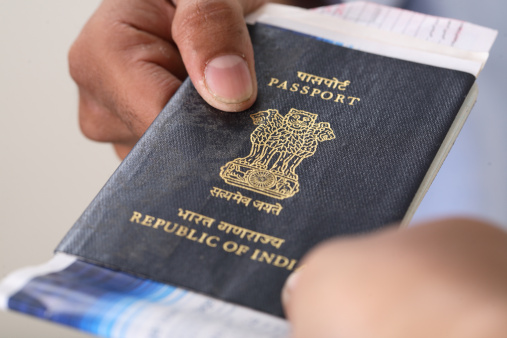
Therefore, because of the travel limitations associated with the yellow book, Tibetans have been pushing to receive Indian passports to expand their ability to travel. And they were successful in their campaign. Recently, it was announced that Tibetans born between January 1950 and July 1987 will be eligible for an Indian passport but they will have to meet certain requirements. These include moving out from the Tibetan settlements and giving up one’s Tibetan refugee papers. The Indian government’s reason for the requirements was very simple – according to the Indian Constitution, those who bear an Indian passport are not allowed to have dual citizenship. Hence, carrying a yellow refugee book to identify oneself as Tibetan, whilst simultaneously carrying an Indian passport is a breach of the Indian Constitution. To hold an Indian passport also means the bearer becomes an Indian citizen, thereby making it illegal and illogical for them to stay in the refugee-only Tibetan settlements.
There was an uproar as a result of this announcement. People who agreed with the requirements were accused of being anti-Tibetan and too eager to give up their Tibetan identity (whatever that may be). The Indian government was accused of being unfair…this despite India giving a home to the Tibetans for 60 years! The irony is that this uproar has not been directed at the Tibetan leadership when the majority of them are either foreign citizens or carry two passports. The Tibetan leaders themselves have remained silent on this issue, afraid to draw attention to their illegal activities. Of course they would be embarrassed that while they have the freedom to travel (due to possessing more than one passport), their fellow Tibetan man continues to struggle to travel on the yellow book or is faced with accusations of being a traitor when they bear an Indian passport.
OUR QUESTION
Why is someone a traitor when they hold an Indian passport, but the Tibetan Prime Minister Sikyong Lobsang Sangay is not a traitor for having American citizenship? Just because they are in office does not mean that the Tibetan leadership are exempt from the law. It does not mean that they automatically deserve greater freedom of movement and greater freedom of travel as compared to their countrymen and women. At a time when everyone is struggling, it is even more important for the leaders to practise humility and not put themselves higher than everyone else. They are in this struggle with their people.
Why do they not work to lift the yellow book’s travel limitations for their entire community? If they were really serious about providing the best opportunities for their people, they should not allow anyone to be bullied and harassed, and made to feel guilty for taking on an Indian passport. The Tibetan leadership should issue a statement to absolve Indian passport holders of any accusations of being anti-Tibetan. But the problem is if they were to say something, they risk being questioned about their own travel documents and it will come to light just how much benefits and privileges they receive, while the rest of the Tibetan community continue to struggle.
[2] Dorje Shugden
Some of the biggest double standards exhibited by the Tibetan leadership have been related to the Dorje Shugden issue. The practice was banned in 1996 and since that time, while the Tibetan leadership preaches democracy and freedom, their actions towards Shugden practitioners have been anything but.
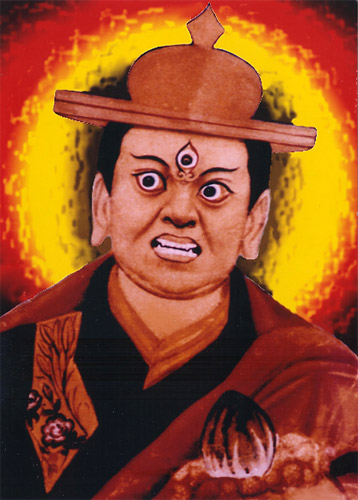
Over the last 20 years, the Tibetan leadership have made every effort to stamp out the practice, from demonizing it as spirit worship to stigmatizing Dorje Shugden practitioners as anti-Dalai Lama. They have directed riots against Dorje Shugden devotees, expelled them from monasteries, bullied their children out of schools, withheld medical treatment, and even refused travel documents to newly-arrived Tibetan refugees who are hoping to leave Nepal and travel to India.
The Tibetan leadership have taken every opportunity to talk about, degrade and demonize the practice. In 2014 for example, His Holiness the Dalai Lama devoted 27 minutes of his teaching while he was in Sera Monastery to speak against Dorje Shugden. That is just one example and many other lamas have done the same. The point is, those many hundreds of hours that they devoted to this type of talk could have been spent giving actual Dharma teachings. And not only did Dharamsala encourage them to speak in this way, but the Tibetan leaders have also spent money on anti-Shugden websites, anti-Shugden documentaries, and anti-Shugden publications and books.
OUR QUESTION
Is this the behavior of a supposedly Buddhist government, to waste sponsors’ money on anti-anything projects when the same funds could be channelled instead towards the welfare of the Tibetan community by building more schools and hospitals? What about using the money to invite and pay for good Indian doctors to treat the older, sick monks? Tuberculosis, diabetes and high blood pressure are rampant amongst the older generation of monks. The Tibetan leadership, who claims to be Buddhist, should address this and stop focusing on withholding treatment from Dorje Shugden practitioners. They should stop using funds given by well-meaning sponsors, to bully Shugden practitioners into giving up the practice.
On the one hand, the Tibetan leadership portrays themselves to be a suffering, downtrodden leadership being bullied by a greater power. On the other hand, with the money that they raise from pretending to be a downtrodden leadership, they waste these funds to suppress and ostracize a group of people. How can they claim to be bullied, when all along they have been the ones doing the bullying?
[3] Is China Friend or Foe?
One of the Tibetan leadership’s most glaring double standards concerns their relationship with China, which is surprising considering the fact Dharamsala blames all of their troubles and obstacles on the Chinese leadership.
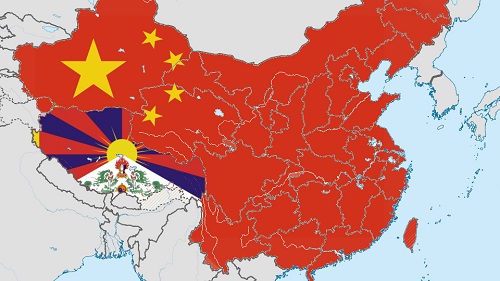
In 2016, after months of promoting an inaccurate Reuters article which tried to link Dorje Shugden’s practice to China, Dharamsala followed up by releasing their own anti-Shugden video. In the video, the Tibetan Prime Minister Sikyong Lobsang Sangay and Dhardon Sharling alleged that Dorje Shugden practitioners are funded by the Chinese leadership. Note that although they did not provide any proof to substantiate their claims, they were adamant that there is a link. It was thus implied very strongly that Dorje Shugden practitioners are traitors because they have Chinese connections.
So you can imagine everyone’s surprise when just one day after the Tibetan leadership released this video, the department headed by Dhardon Sharling announced a workshop had been organized to teach Tibetans how to befriend the Chinese. In the space of 24 hours, they were now encouraging people to make Chinese connections when literally just the day before, anyone with these connections was a traitor.
In fact, having connections with China has always been a conveniently selective affair. If the Tibetan in question is the Dalai Lama, a non-Gelug practitioner or a favorite of the political establishment, then a relationship with the Chinese leadership is not a problem. For anyone else however, this relationship or the potential of a relationship will be used to demonize and ostracize them from everyone else.
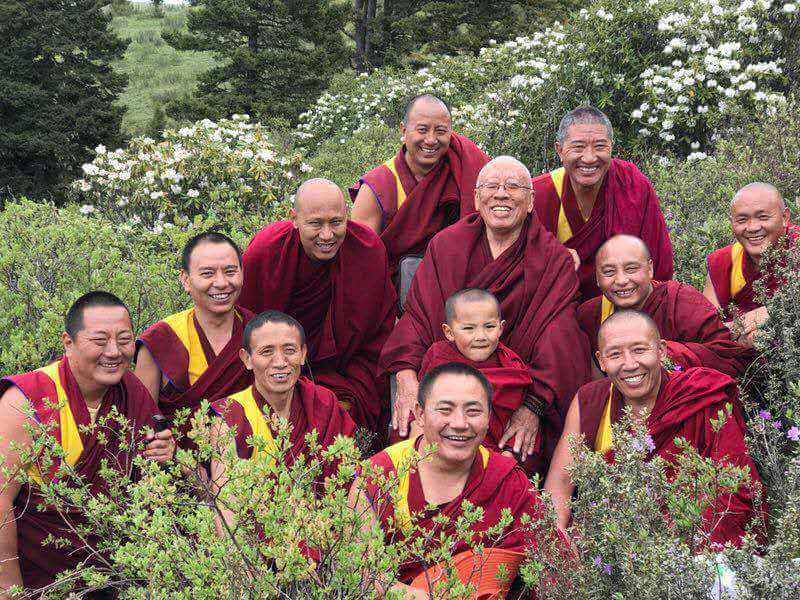
Amchok Rinpoche (seated with glasses) in a recent photo taken in Tibet. He has clearly been unaffected by his defection back to Tibet. How come there were no calls for him as a traitor? Surely as the Dalai Lama’s personal biographer, he would be most effective in his job by being next to the Dalai Lama. The Tibetan leadership must be very embarrassed by his defection, because they have not issued statements announcing that he betrayed the Dalai Lama and labelling him a traitor.
Take, for example, Amchok Rinpoche, the Dalai Lama’s personal biographer. He defected, left Dharamsala and returned to Tibet and upon his arrival, he immediately received Chinese citizenship. The speed at which he received his travel documents and citizenship is proof positive that he had Chinese connections before he left India but no mention is ever made of this and the whole Tibetan leadership stays silent.
Simultaneously, other lamas like the late Akong Rinpoche are actually based in China but no criticism are ever directed their way despite their very obvious Chinese connections. It is impossible to believe that Akong Rinpoche could have been based in Chengdu, China for so many years and not receive one single cent from a Chinese citizen. Even His Holiness the Dalai Lama receives money from the Chinese leadership! Yet he is never criticized for being funded by them. We are not asking for these teachers to be criticized for their Chinese connections, but rather questioning the Tibetan leadership’s double standards in applying their policies when it comes to different individuals.
OUR QUESTION
So which one is it? Is it evil to receive money from the Chinese leadership or not? If it is evil for Dorje Shugden practitioners to allegedly receive funding, then it is also evil for anyone else including Amchok Rinpoche, Akong Rinpoche and even His Holiness the Dalai Lama. But how come Dorje Shugden practitioners are targeted for so-called Chinese links, when other people who have very obvious links are not targeted in the same way?
How can the Tibetan people trust a leadership who has no clear stance, view or strategy on how to accomplish their political goals? On something so fundamental as a relationship with China, the Prime Minister and his sidekick cannot decide what is good and what is bad. It is little wonder that the Tibetan leadership have failed to initiate dialogue with China, when they themselves are unclear about their own relationship with China. You cannot spend decades calling the Chinese leadership every derogatory name under the sun, then organize a workshop teaching Tibetans how to befriend the Chinese and expect those methods to be successful.
[4] The Tale of Two Karmapas
Within Tibetan Buddhism, there are four major traditions – the Gelugs, the Kagyus, Nyingmas and Sakyas. Due to interference from the Tibetan leadership, each school is now facing a very divisive set of issues. The Gelugs have to deal with the Dorje Shugden issue, while the Sakyas are dealing with the change of succession process for their throneholder. A branch of the Kagyus, known as the Drukpa Kagyus, are dealing with the illegal takeover of their monasteries while Karma Kagyus are dealing with the conflict because they have two throneholders (known as the Karmapa).
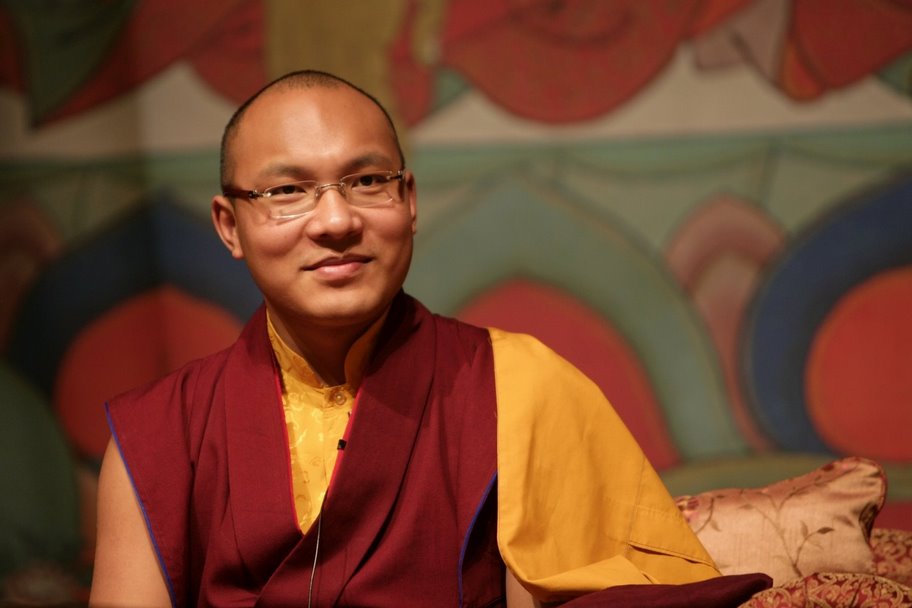
Urgyen Trinley, one of the two Karmapa candidates, and the person endorsed by the Tibetan leadership. Their endorsement of him as the real Karmapa is out of the ordinary and not keeping with the Karma Kagyu tradition of recognizing their own candidates. The CTA’s interference in the matter has led to the Karma Kagyu sect being deeply divided.
The search and recognition of the new Karmapa incarnation has always been conducted by the regents of the Karma Kagyu lineage – the Tai Situ, the Sharmapa, Jamgon Kongtrul and Gyaltsab Rinpoche. After Dharamsala interfered with the recognition of the 17th Karmapa, which you can read about here, it resulted in the identification of two candidates. Since that time, the Karma Kagyu lineage has been split into two, with one half supporting Urgyen Trinley (Dharamsala’s choice) and the other supporting Thaye Dorje (the choice of the Sharmapa, who has historically been the person most directly involved in the process).
Because the Tibetan leadership has made an obvious choice in their preferred Karmapa candidate, their decision has been used to discriminate against Thaye Dorje. He has been called the false Karmapa by Urgyen Trinley’s supporters, who use the fact Dharamsala supports their candidate as proof that Urgyen Trinley is the real and authentic Karmapa. And because Dharamsala allowed this issue to escalate, and because they did not say anything to appease either side, violence descended upon Rumtek Monastery, the historical seat of the Karma Kagyus. The Indian police had to step in to quell the violence and the courts ruled that neither Karmapa is allowed to take up residence or be enthroned in Rumtek. It is a ruling which stands to this day, and armed Indian police still continue to patrol the monastic grounds to prevent any further sectarian violence.
OUR QUESTION
Is the Tibetan leadership a secular government or a spiritual one? If they are secular, then why did they get involved with a spiritual matter like the head of the Karma Kagyus? Once they got involved and divisions were created thanks to their interference, they should not have remained silent when violence erupted in Rumtek. They should have spoken up immediately and firmly requested their people to stop fighting and to respect one another.
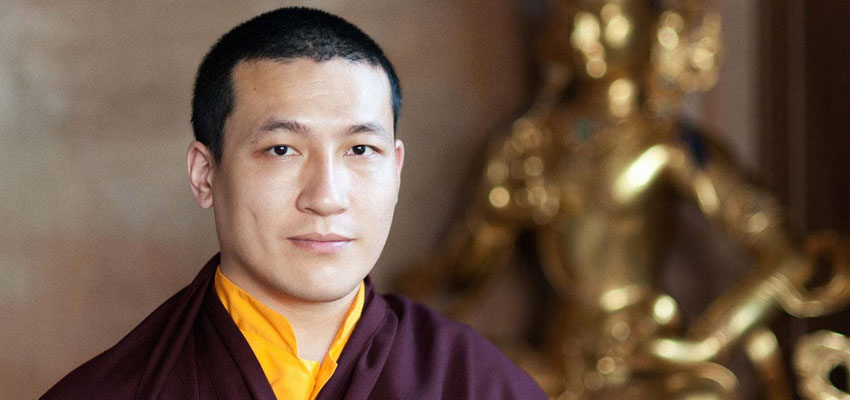
The other Karmapa candidate, Thaye Dorje who, although has not been endorsed by the Tibetan leadership, was recognized and educated by the Sharmapa, a Karma Kagyu lama who has historically been the closest and most involved with the recognition of any Karmapa incarnations.
And if they are spiritual, why did they create schism instead of respect the Karma Kagyu’s traditions and systems? If they are a spiritual leadership, they should have immediately stopped showing their support for one Karmapa candidate, thereby degrading the other side’s choice. The fact is that the Tibetan leadership are unclear what they are; if they are secular, they have not been governing their people to maintain peace and prevent violence and if they are spiritual, they have been creating schism amongst the various traditions which is contrary to truly spiritual behaviour. Being vague and having double standards suits them because when they have created the schism and division, everyone will be too busy discussing and focusing on that to question Dharamsala about their goals, methods and motivation.
[5] Tibetan Democracy is a Farce
Ultimately, nothing the Tibetan leadership says can be trusted. They label themselves a Buddhist government, yet they create schism, disharmony and worst still, violence in their community. They label themselves a democracy, yet they destroy all the hallmarks of a democracy. With the Tibetan settlements, there is:
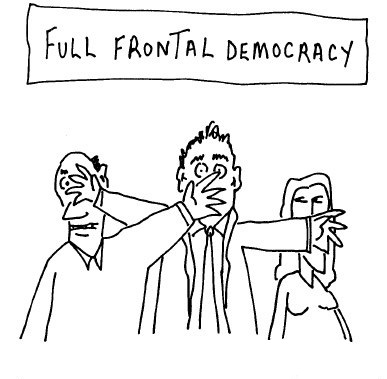
- no freedom of speech. Newspapers like Mangtso who publish views that do not align with or support the leadership’s views are violently harassed into shutting down.
- no freedom of religion. Dorje Shugden practitioners are not allowed to practise their faith without some kind of violent consequence, like being chased out of their homes with rocks, being stabbed in the early hours of the morning, having their monasteries rioted against and even murdered.
- no freedom of thought. Even school children who dare to ask questions of the Tibetan leadership are pulled aside after the event, to be interrogated and reprimanded for daring to question the Prime Minister.
- no freedom of movement. The ordinary Tibetan struggles to get paperwork to allow him to travel freely, while the leadership hold dual citizenship or two sets of travelling papers, breaking the law but never face any kind of repercussion for this.
- what is essentially a one-party system with no independent candidates. Within Tibetan society, it is also guaranteed that anyone who challenges the status quo will have their reputations and livelihoods destroyed. In the 2016 Sikyong elections, the independent candidate Lukar Jam was frozen out of the second round of voting. Midway through the election, the Election Commission (the body responsible for maintaining a fair election) changed the rules in order to exclude him. Subsequently, Lukar Jam was accused of being anti-Dalai Lama and has had his property vandalized. Even groups who are legally entitled to Parliamentary representation, like the Jonangpas, are denied it when the Parliament takes a vote against their inclusion in the Tibetan Parliament in Exile.
Given such living conditions, and in any other circumstance, the Tibetan leadership would be called dictatorial or authoritarian. However, because they are THE Tibetan refugee community and THE Dalai Lama is a part of them, no one thinks to look at them in such a way. And Tibetan leadership are happy to make use of the Dalai Lama’s reputation to divert the attention and hide their own inadequacies, to line their own pockets and continue exploiting the accepting nature of the Tibetan people who have, over centuries, been beaten down into submission to never think or dare to question those in charge.
Conclusion
What the Tibetan leadership have been slow to realize is that 60 years ago, they set their people on the path to division, disharmony and failure. They did this by encouraging different groups to split, therefore weakening the people’s power by making them disagree on any topics that they might otherwise find common ground on. While this ‘divide and conquer’ tactic was enforced to solidify the leadership’s position, the overall result is an ineffectual leadership governing a community so used to disagreeing with one another, that they have made little real progress in any issues since 1959.
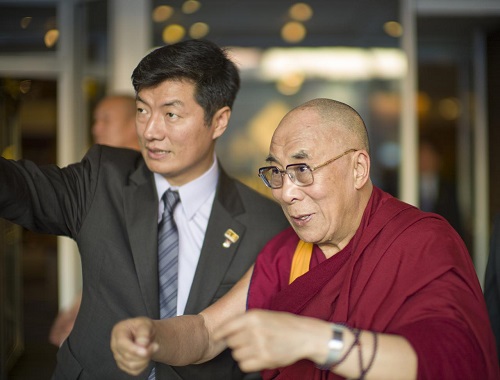
How much longer can the Tibetan Prime Minister Sikyong Lobsang Sangay keep up his pretence of supporting the Dalai Lama when in reality, his actions are contrary to the Dalai Lama’s teachings on unity and harmony among the Tibetan people?
A casual observer will easily conclude that the Tibetan leadership’s karma is coming back to them by splits being created everywhere. On the topic that affects the most Tibetans – that is, their political causes – there is total destabilization and disagreement now. The entire community is split between rangzen (full independence) and the Dalai Lama’s umaylam (meaningful autonomy), meaning even on the Tibetan community’s largest and most fundamental issue, they have no consensus.
Without a consensus, how will they ever move forwards to initiate dialogue with China when they do not even know what they want? Consider the Chinese leadership and their united stance on Tibet, and compare that to the Tibetans who all bear different opinions. While the Chinese are firm and every official sings the same tune, the Tibetans flip-flop on everything. They are only ever firm about destroying their opponents.
And that is precisely why the CTA will never get anywhere. It is time that the CTA realize that they have more pressing challenges brought about by external sources than compared to internal ones, and they should stop making further problems amongst their own people. They should stop looking outside to blame others for their failures because in doing so, their real problems are never addressed and resolved. Hence, 60 years after the first Tibetans entered exile, the community has made almost no headway in their so-called struggle.
But it is not too late. Parts of the world continue to be enamored by His Holiness the Dalai Lama’s charm, and are still somewhat willing to be seduced by his self-effacing, disarming nature. So it is definitely not too late for the Tibetan leadership to stop enforcing double standards and hypocrisy with their people, and work to undo the damage of the last 60 years. Do this while they still have the Dalai Lama’s reputation to rely on for fundraising because once that is gone, they can kiss goodbye any chance of a productive and effective leadership.
MORE NEWS LIKE THIS